Kimbap (or gimbap) is one of Korea’s most beloved grab-and-go meals. It's colorful, nutritious, and endlessly customizable. Whether you’re packing a picnic, craving a quick lunch, or curious about Korean cuisine, this simple kimbap recipe will walk you through the essentials.
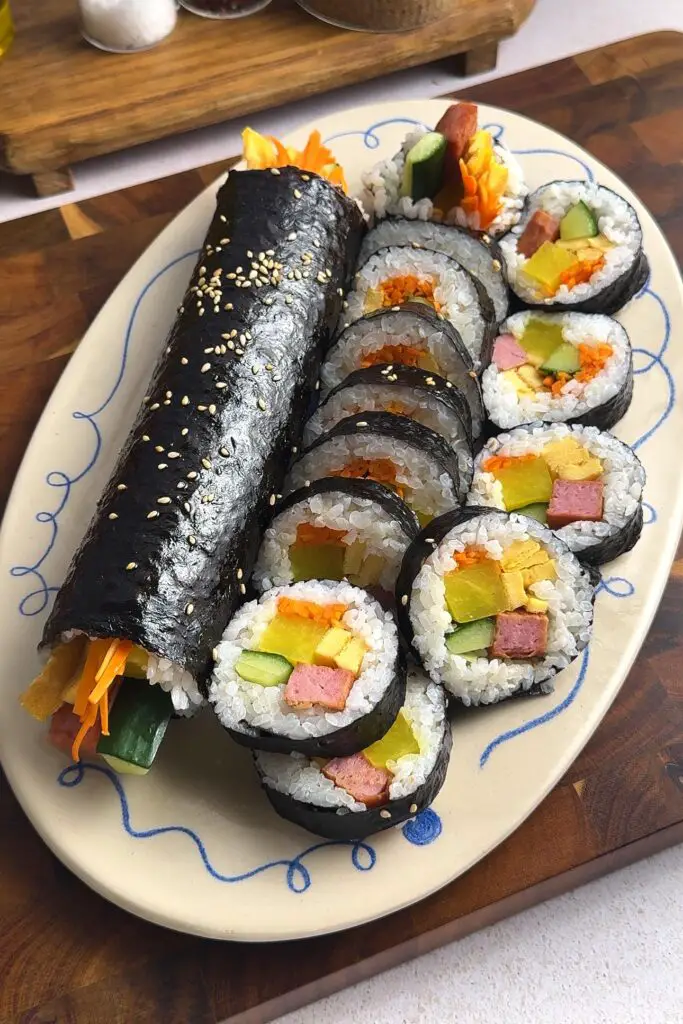
My other recipes are also really delicious! Check out my creamy ssamjang pasta as well as my gochujang pasta.
Jump to:
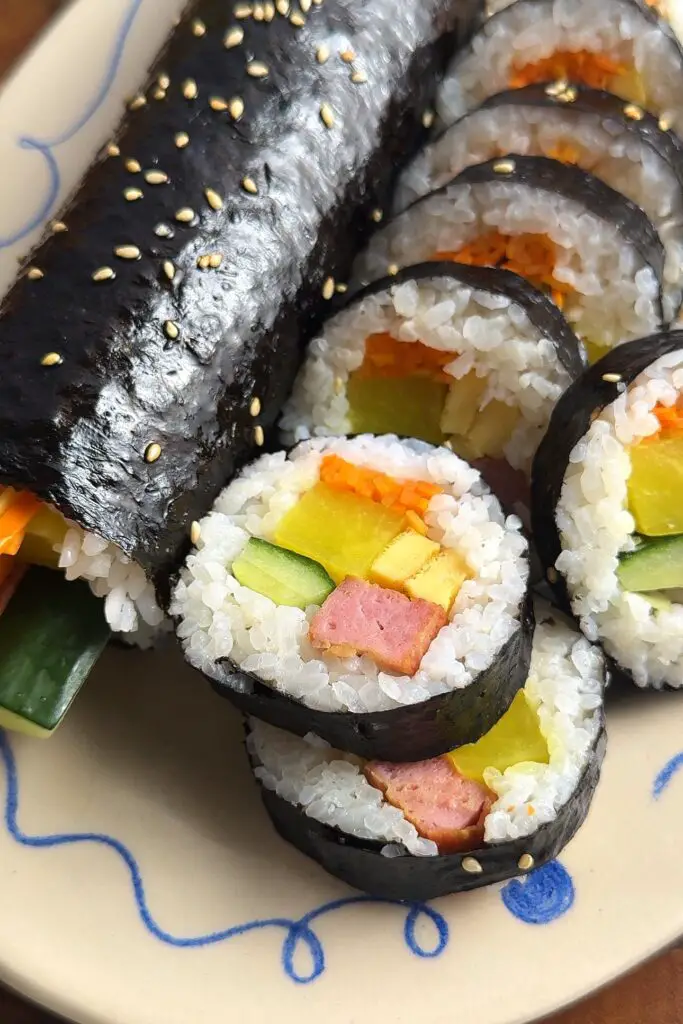
🤔 What Is Kimbap?
Kimbap (김밥) literally means "seaweed rice." It’s a Korean dish made from steamed white rice and assorted fillings rolled in gim (seaweed). Think of it as Korea’s answer to a portable meal. It is nutritious, neat, and endlessly adaptable.
Common fillings include vegetables, pickled radish, meat, egg, or even cheese. Kimbap is often sliced into bite-sized rounds and served cold or at room temperature. It’s popular in school lunches, on hikes, or as a street food snack.
The terms kimbap and gimbap refer to the same dish. The only difference is how they're spelled in English due to Korean romanization rules.
🎤 Rumi’s Kimbap in Kpop Demon Hunters
If you're a fan of the animated film Kpop Demon Hunters, you might have noticed that Rumi, one of the main protagonists, is often seen snacking on kimbap.
Her kimbap is more than just a snack. It symbolizes connection to her Korean heritage, comfort during battle downtime, and is a nod to the importance of homemade food in Korean culture. The animators even gave a close-up of the ingredients in one scene. It showed perfect slices of egg, danmuji, and Spam.
It’s a fun cultural reference and a beautiful reminder that even half-demon pop idols need soul food.
Disclaimer: this blog post is NOT sponsored. I do not own any of the animated photos below. They are simply to show the reference. The animated photos are stills taken from Kpop Demon Hunters on Netflix.
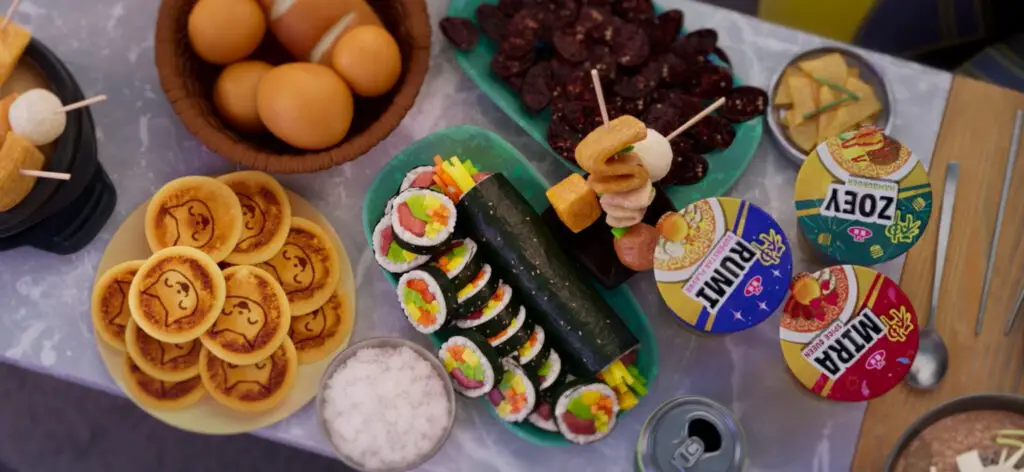
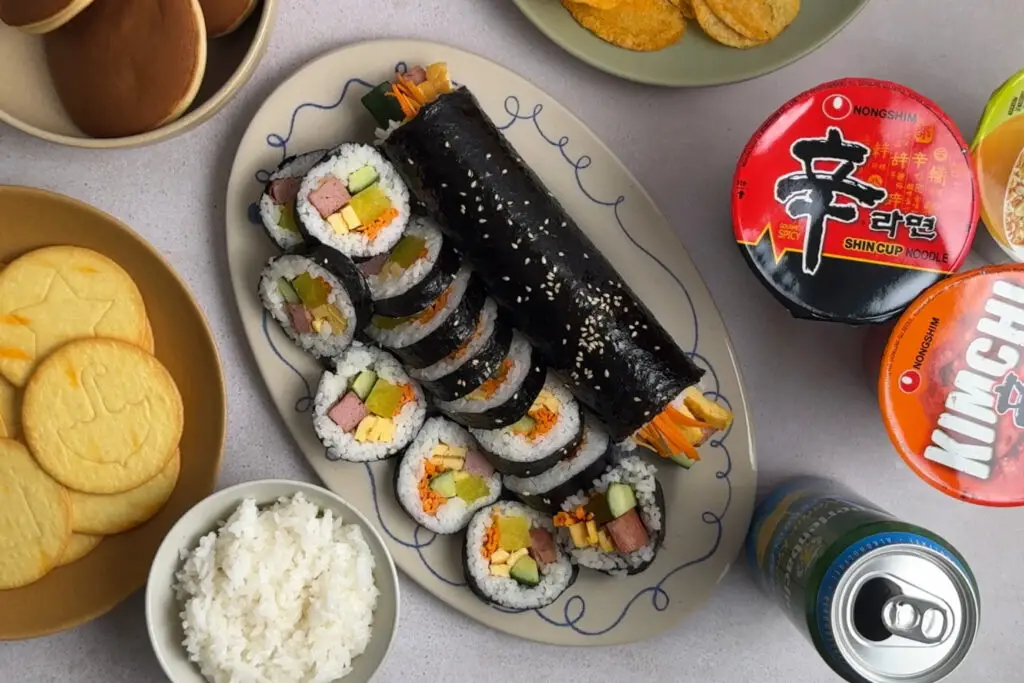
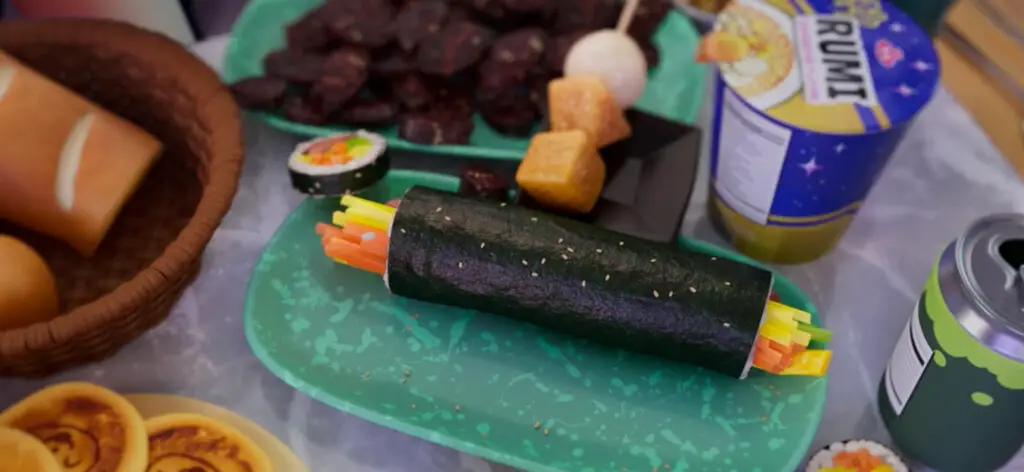
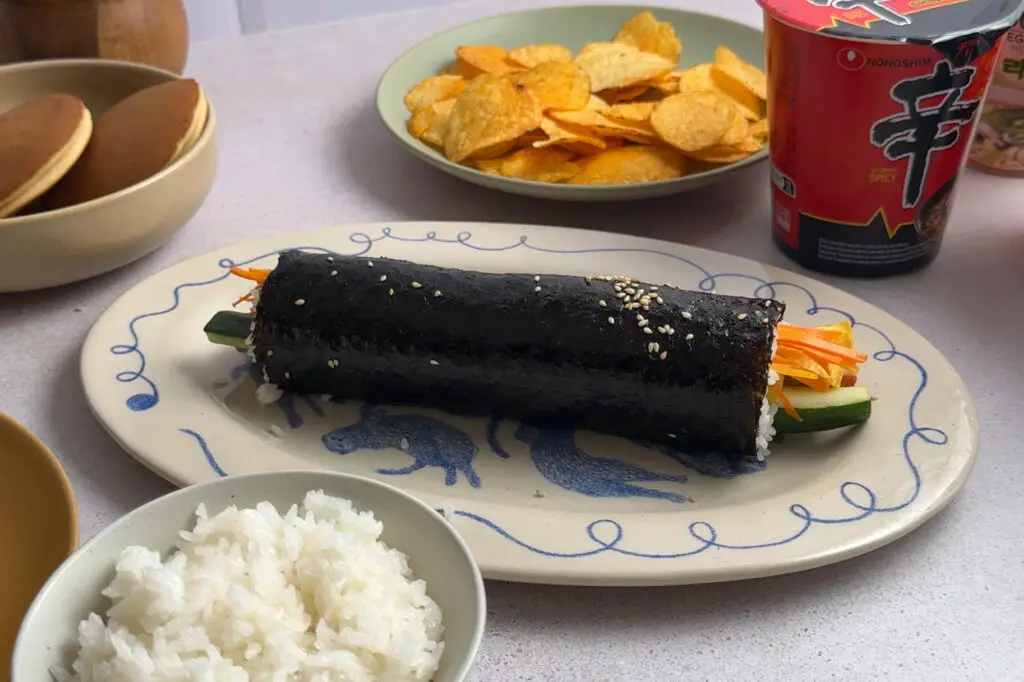


🍣 What’s the Difference Between Kimbap and Sushi?
Though they may look alike, kimbap and sushi are quite different:
| Feature | Kimbap (Korean) | Sushi (Japanese) |
|---|---|---|
| Rice seasoning | Lightly oiled or plain | Seasoned with vinegar and sugar |
| Fillings | Cooked ingredients: Spam, egg, veggies | Often includes raw fish |
| Flavor profile | Savory, sweet, and hearty | Tangy, delicate, and umami-rich |
| Serving style | Eaten as a whole roll or sliced bites | Often smaller rolls or nigiri |
| Seaweed | Gim (often roasted and seasoned) | Nori (unseasoned) |
So while sushi and kimbap may look like cousins, they’re culturally and culinarily distinct!
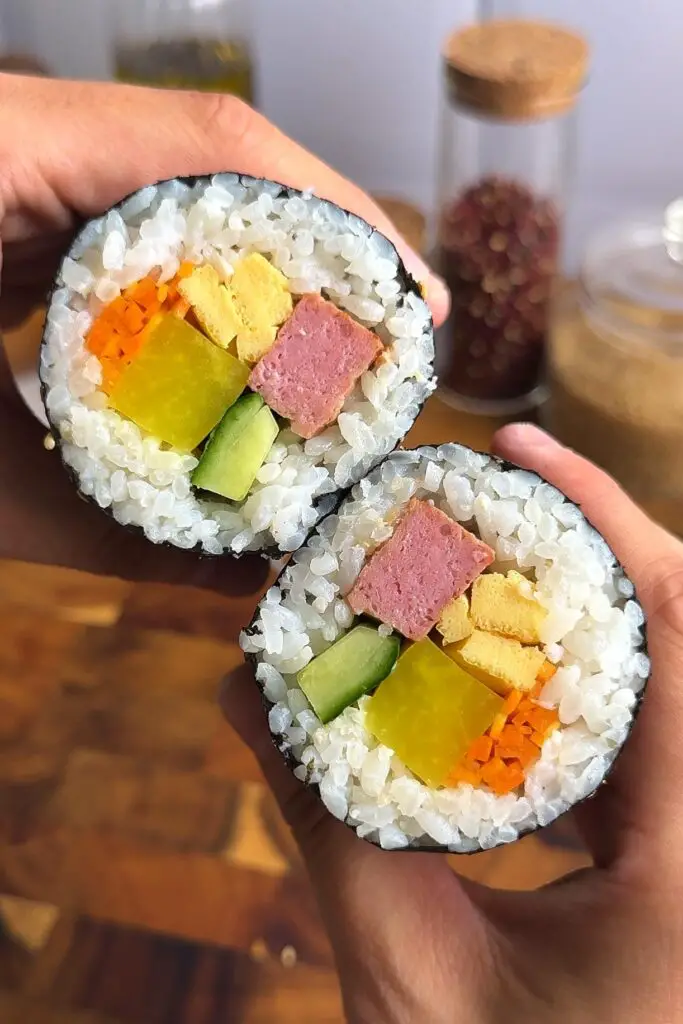
🛒 Ingredients
Here’s what you’ll need to make classic Korean kimbap at home:
- Eggs – Lightly beaten and cooked into a thin omelet, then sliced. The egg adds color and soft texture.
- Cucumber – Adds refreshing crunch. You may optionally remove the seeds to reduce moisture.
- Carrots – Julienned and lightly salted, then sautéed. Adds color and sweetness.
- Pickled yellow radish (danmuji or takuan) – This is the tangy, sweet, and vibrant yellow strip you find in most kimbap rolls. Danmuji is the Korean name; takuan is the Japanese equivalent. Both are made from daikon radish but danmuji tends to be sweeter.
- Spam or luncheon meat – A savory, salty protein that pairs perfectly with the mild rice and vegetables. Koreans often use Spam in home cooking thanks to its post-war introduction. You can substitute with beef bulgogi, tofu, or even tuna.
- Short-grain white rice – Korean rice is stickier than long-grain, helping the roll hold together. Japanese sushi rice is similar in texture and can be used interchangeably. Seasoning is minimal here compared to sushi rice.
- Seaweed (gim or nori) – Gim (김) is roasted Korean seaweed, while nori is the Japanese version. Both are usable, though gim often has a slightly more seasoned flavor and delicate texture.
- Sesame oil and sesame seeds – Brushing the roll with sesame oil adds shine and nutty aroma. A sprinkle of sesame seeds adds extra flavor and texture.
🔍 Korean vs Japanese Ingredients: While many components of kimbap overlap with Japanese sushi (like rice and seaweed), the approach and seasonings differ. Kimbap rice is typically unseasoned or lightly oiled, whereas sushi rice contains vinegar and sugar. Takuan and danmuji are very similar pickled radishes, but Korean danmuji is typically a bit firmer and brighter in color.
See recipe card for quantities.
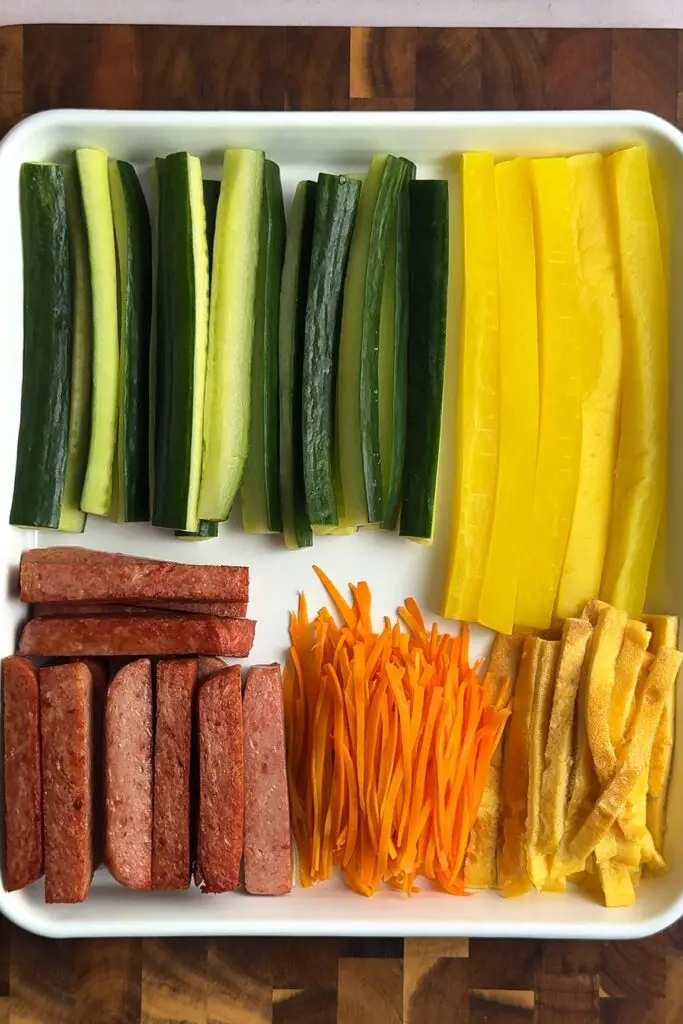
📖Instructions
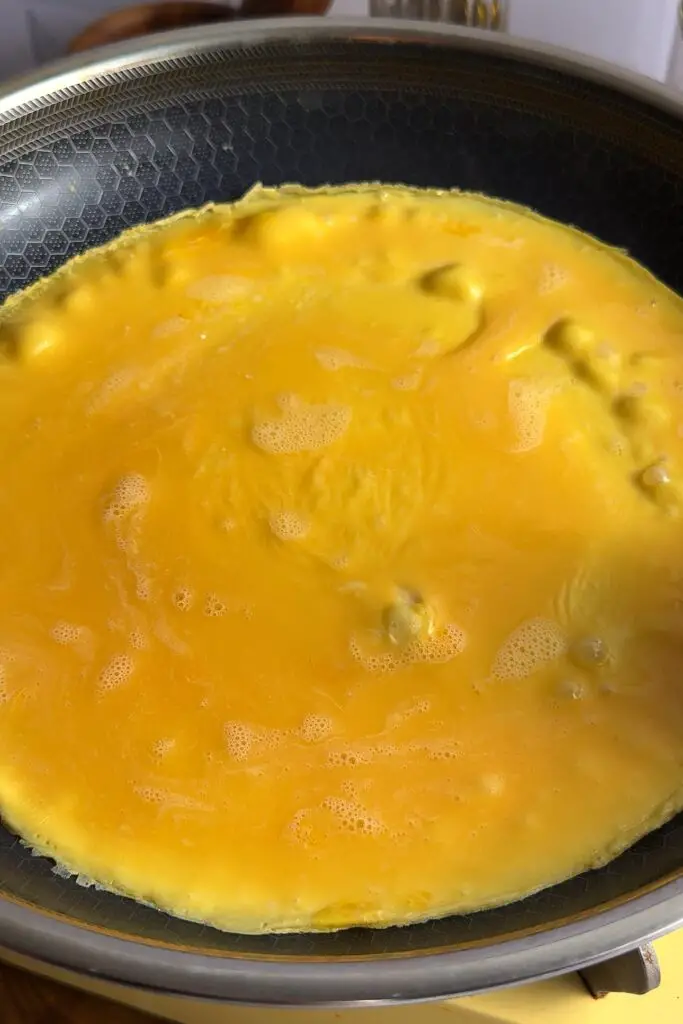
Step 1:
Prepare the egg: Beat the eggs and cook them in a lightly greased pan until just set. Slice into thin strips.
Prep the vegetables: Cut the cucumber, carrots, pickled radish, and Spam into long, thin strips. Remove cucumber seeds if desired.
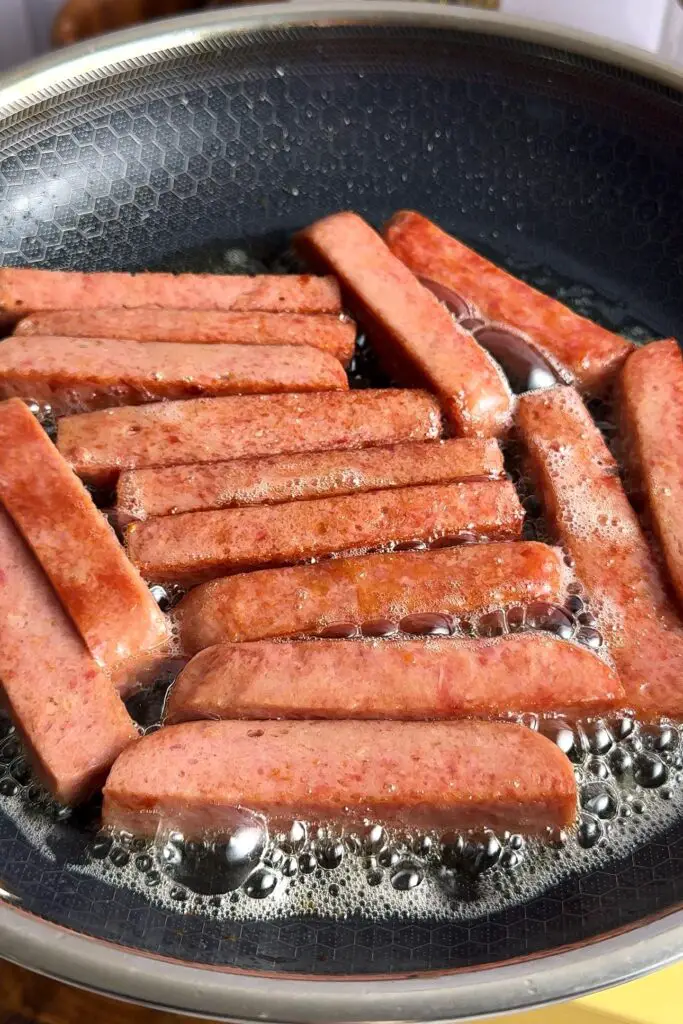
Step 2:
Salt and cook the carrots: Toss the carrots with 1 tablespoon of salt and let sit for 15 minutes. Squeeze out excess moisture, then sauté for 4 minutes. Set aside.
Fry the Spam: In the same pan, add a little vegetable oil and fry Spam strips for about 1 minute on each side until golden and crisp.
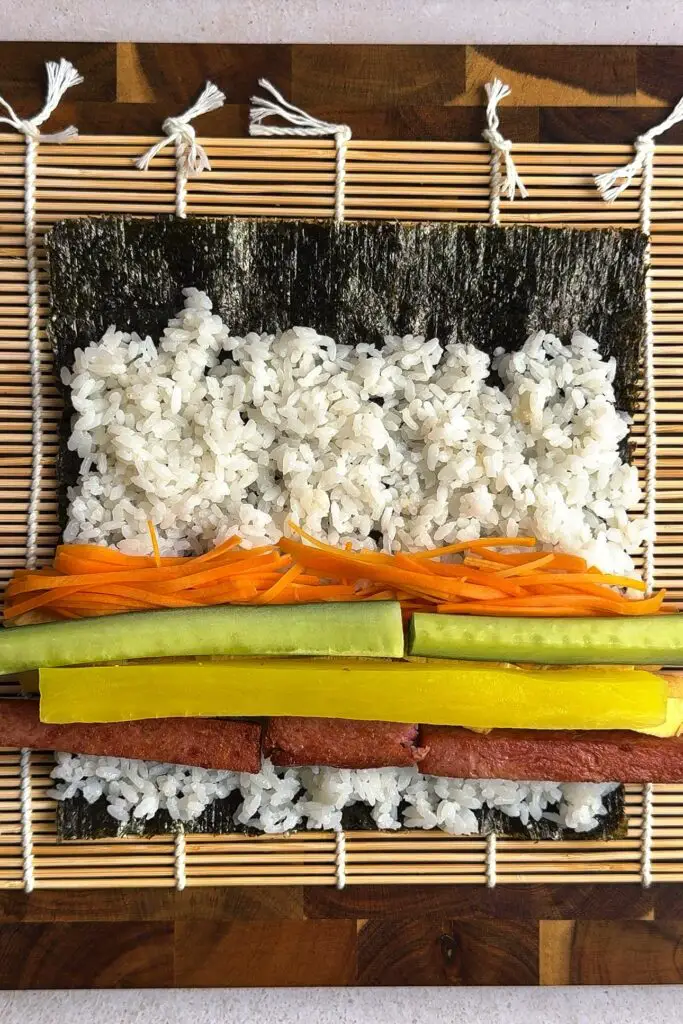
Step 3:
Assemble the kimbap: Place a sheet of seaweed shiny-side down on a bamboo mat. Wet your fingers and spread a thin layer of rice over the seaweed, leaving about 2 cm (1 inch) at the top.
Add fillings: Line up a few strips of each ingredient across the center of the rice.
Roll it up: Use the bamboo mat to tightly roll the seaweed over the fillings. Press gently but firmly. Continue rolling to seal the edge. Use a few grains of rice as “glue” if needed.
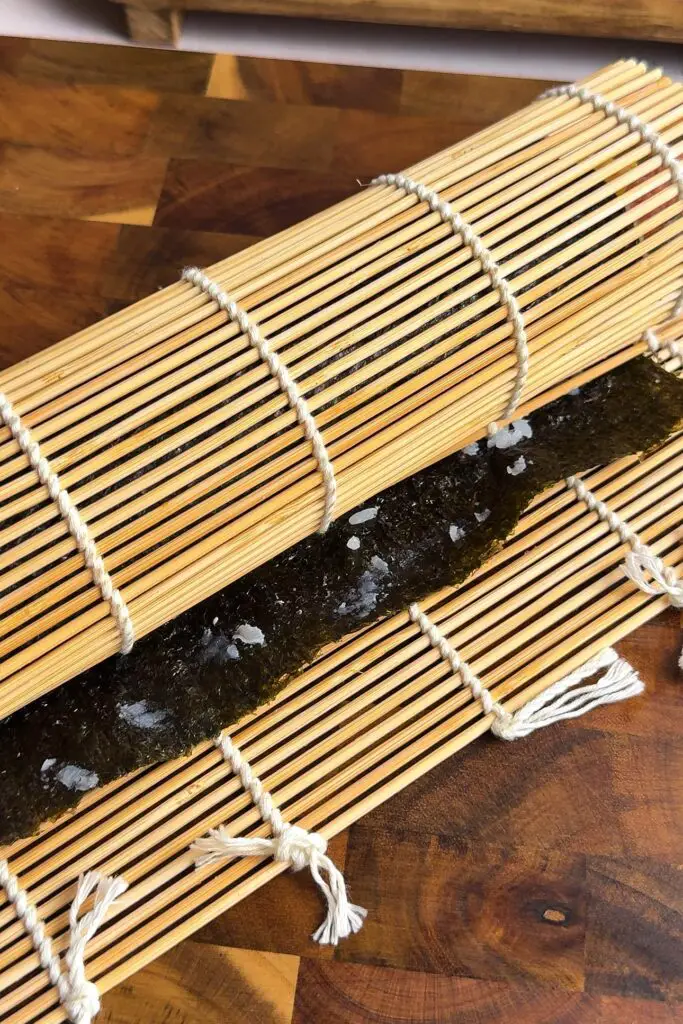
Step 4:
Finish (optional): Brush the outside with sesame oil and sprinkle with sesame seeds.
Slice & serve: Slice into bite-sized rounds with a sharp knife. Wipe the blade with a damp cloth between cuts for clean slices.
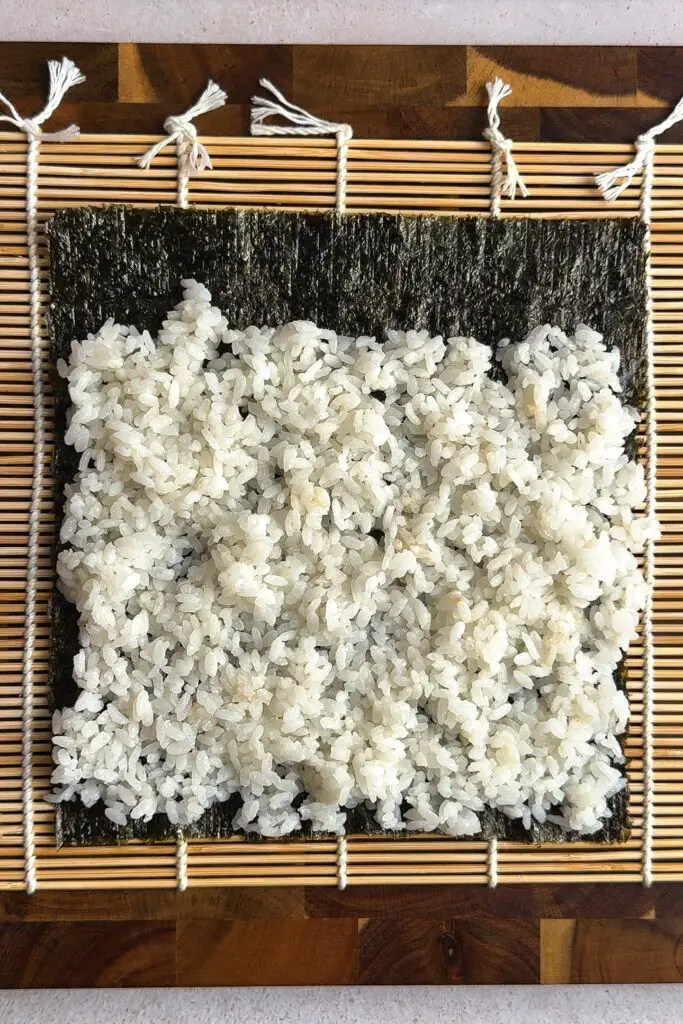
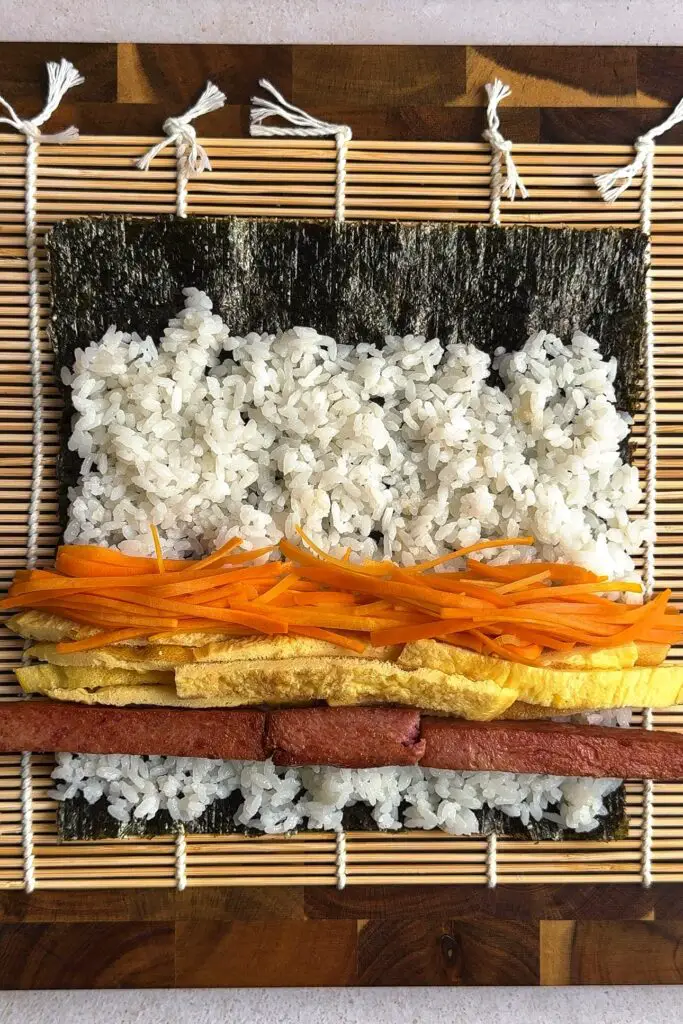

Hint: Roll the kimbap really tightly so that it doesn't fall apart!
🔁 Substitutions
- Spam → Tofu, bulgogi beef, canned tuna, chicken breast
- Danmuji → Takuan (Japanese pickled radish), cucumber pickles
- Cucumber → Zucchini or avocado slices
- Short-grain rice → Sushi rice or Calrose rice
- Gim → Nori sheets
🧬 Variations
- Cheese Kimbap – Add a slice of processed cheese for creamy richness.
- Tuna Mayo Kimbap – Mix canned tuna with mayo and stuff inside.
- Kimchi Kimbap – Add stir-fried kimchi for a spicy kick.
- Vegan Kimbap – Skip the meat and use tofu, mushrooms, and extra veggies.
Equipment
You do need some equipment for this recipe. Here is everything you need.
- Bamboo mat – Essential for rolling the kimbap tightly.
- Sharp knife – Dip it in water for clean slicing.
- Rice paddle – Helpful for spreading the rice.
- Nonstick skillet – For cooking egg and frying Spam or other fillings.
Storage
Kimbap is best enjoyed fresh but can be stored in the fridge for up to 24 hours.
To store:
If refrigerated, the rice may harden. Allow to sit at room temperature for 15–20 minutes before eating. Alternatively, cover with a wet paper towel and microwave for 30s.
Wrap rolls tightly in plastic wrap or tin foil and store in an airtight container.
Top Tip
Don’t overfill the roll! If you're new to making rice rolls, less is more. Packing too many ingredients makes it harder to roll and causes the seaweed to tear. Keep it simple, neat, and balanced.
FAQ
Yes! It’s a balanced meal with protein, veggies, and carbs. You can reduce sodium by using low-salt Spam or subbing in lean protein.
You can, but it’s best eaten within a few hours. If making ahead, skip the sesame oil on the outside to prevent sogginess.
You can use a clean kitchen towel wrapped in plastic wrap. It is not as easy, but it works in a pinch.
Yes, though it won’t be quite as sticky.
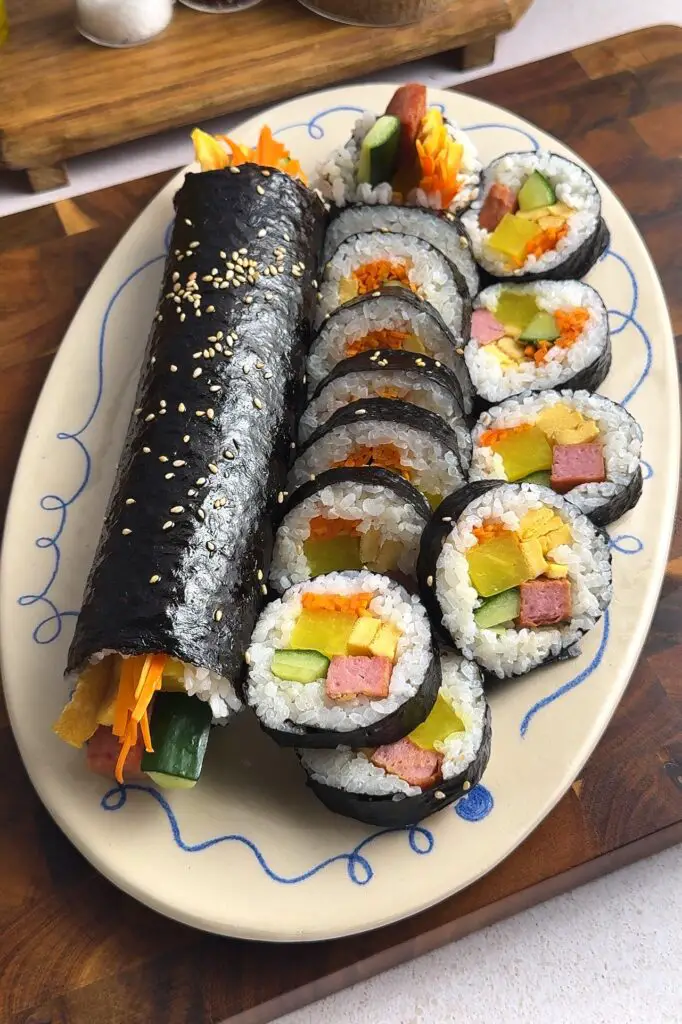
Kimbap (Korean Seaweed Rice Rolls)
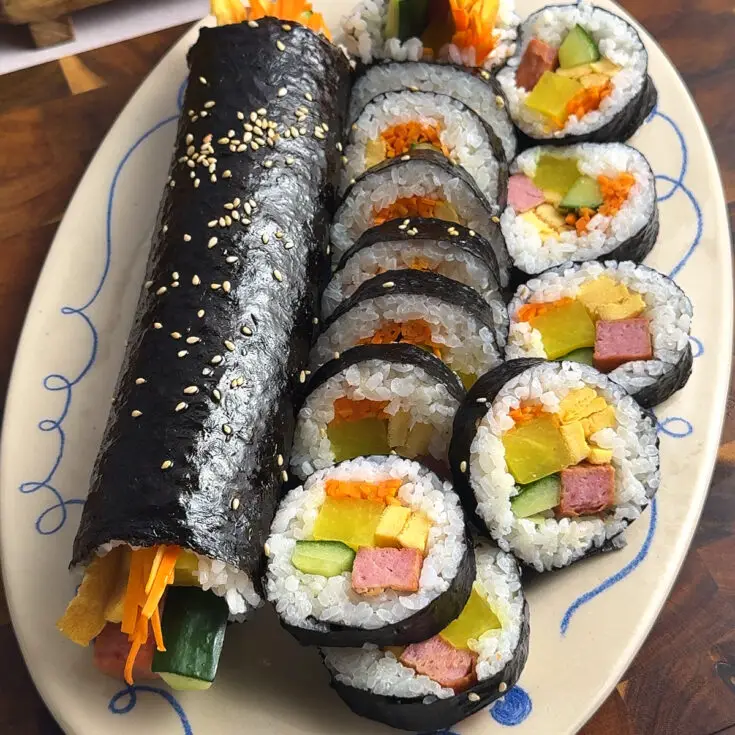
Kimbap (or gimbap) is one of Korea’s most beloved grab-and-go meals. It's colorful, nutritious, and endlessly customizable.
Ingredients
- 3 eggs
- 1 cucumber
- 3 carrots
- 1 pickled yellow radish (danmuji/takuan)
- 1 can of Spam(lunch meat)
- 2 cups of short-grain white rice, cooked
- 4 sheets of seaweed(gim/nori)
- Optional sesame oil and sesame seeds
Instructions
- Beat the eggs and add to a lightly greased pan. Cook until set and slice into thin strips. Cut the cucumber, carrots, pickled radish, and spam into strips. Optionally remove cucumber seeds.
- Toss carrots with 1 tablespoon of salt and allow to sit for 15 minutes. Squeeze out the liquid and sauté in a pan for 4 minutes. Remove the carrots and add spam to the pan along with with vegetable oil. Fry around 1 minute on each side until golden brown.
- Lay down a sheet of seaweed on your bamboo mat. Using wet fingers, spread a thin layer of rice onto the seaweed while leaving 2cm/1inch empty at the top.
- Place rows of each ingredient in the center of the rice. Lift the bamboo mat and fold the rice over the ingredients and press down firmly. Then continue rolling forward to seal the gimbap. Smear grains of rice as glue if needed. Optionally, brush with sesame oil and sprinkle with sesame seeds.


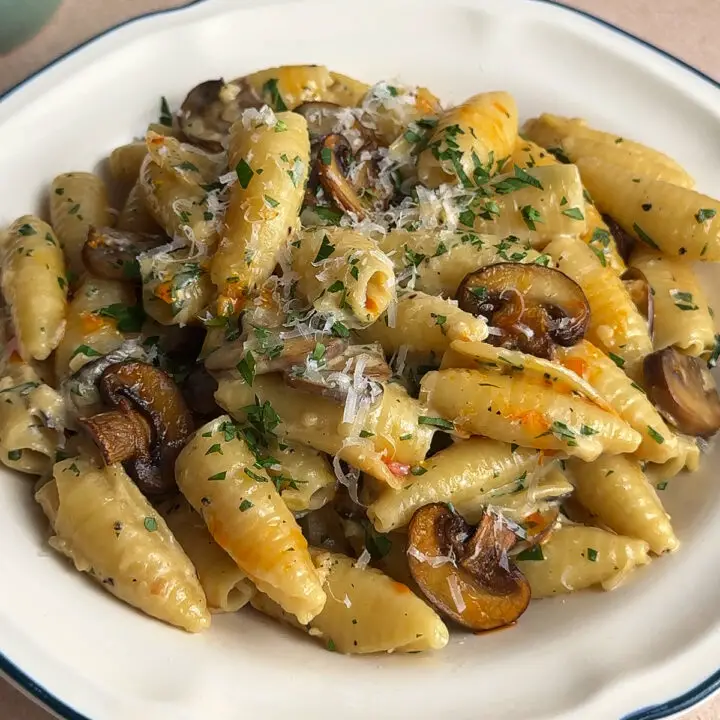
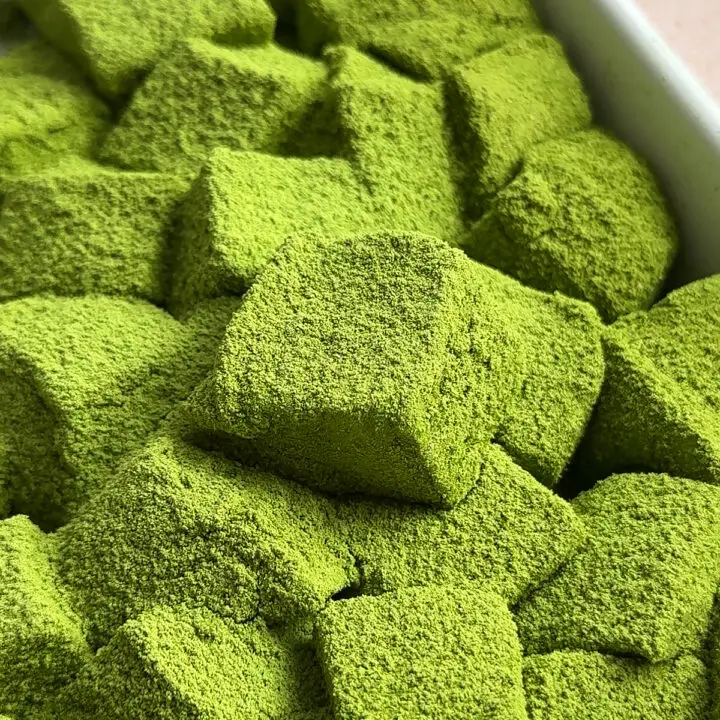
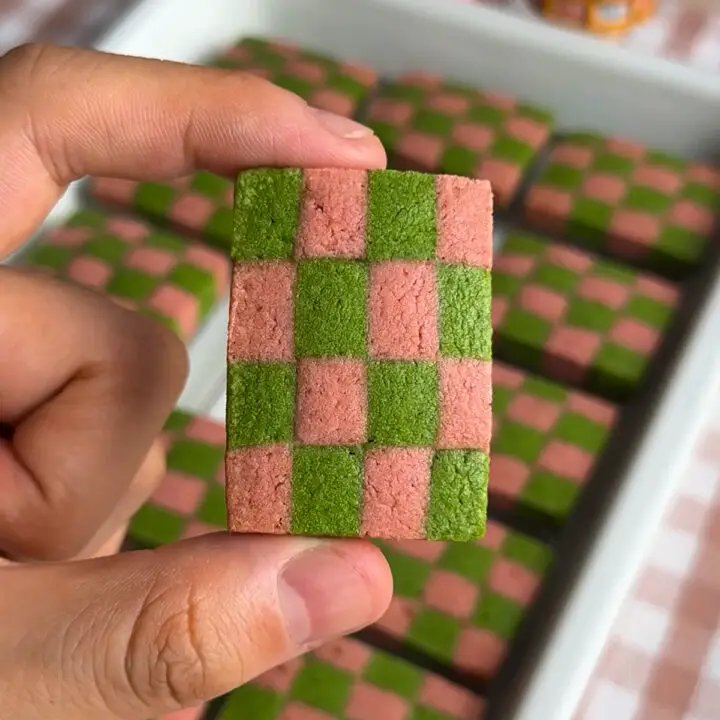
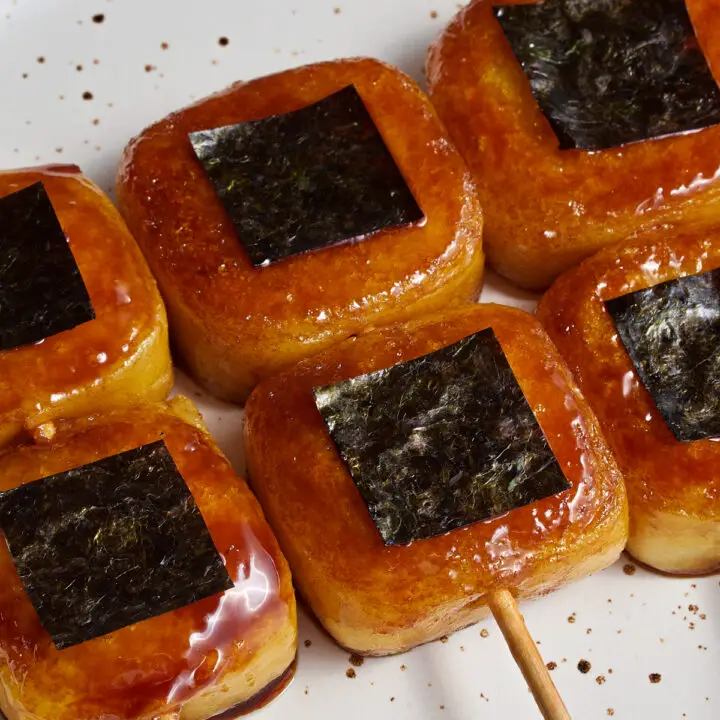

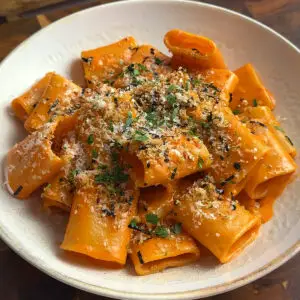


Comments
No Comments